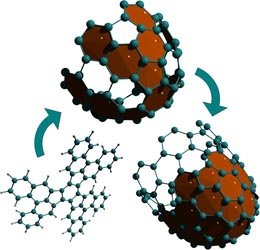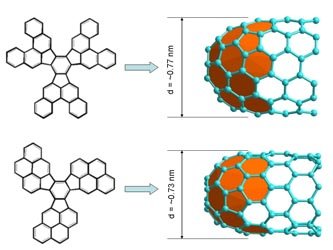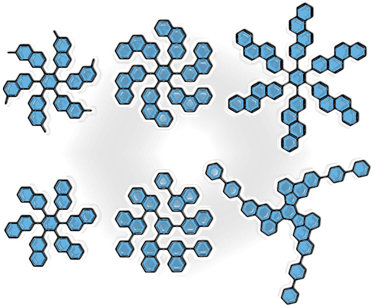
Towards the controlled synthesis of single-walled carbon nanotubes

Single-walled carbon nanotubes (SWCNT) exhibit very promising properties for future applications. However, despite considerable advance in growth methods for CNTs it is still not possible to rationally control their diameters and chiralities. According to recent theoretical and experimental work by several groups investigating the very first steps of CNT synthesis, growth of SWCNTs starts by nucleation of an end-cap fragment on the catalyst particle followed by subsequent growth through incorporation of carbon atoms from the metal surface or bulk. Considering this growth mechanism of CNTs, it appears to be attractive to avoid the usual nucleation step of CNTs leading to the formation of an end-cap with accidental geometry by introducing a predefined end-cap molecule the structure of which can be fully controlled. Subsequent growth will lead to the desired SWCNT species as determined by the end-cap geometry. Further, specially designed polyaromatic hydrocarbons can be condensed selectively to the aimed bowl or fullerene structure on catalytically active surfaces.
Proposed scenario for the controled growth of single walled carbon nanotubes

Selected Publications
 |
The synthesis and purification of a C60H30 precursor molecule for the end-cap of a (6, 6) armchair and of a C54H24 precursor molecule for a (9, 0) zig-zag type single-walled nanotube is reported. An approach to controlled growth of single-walled carbon nanotubes based on surface catalyzed cyclodehydrogenation is suggested. |
A. Müller, K. Yu. Amsharov, M. Jansen: Tedrahedron Lett. 2010, 51, 3221.
http://www.sciencedirect.com
Synthesis of Precursors for Large-Diameter Hemispherical Buckybowls and Precursors for Short Carbon Nanotubes
The facile synthesis of six precursor molecules (see figure) for large-diameter hemispherical buckybowls and short carbon nanotubes is presented. The corresponding hemispherical buckybowls represent end-caps of single-walled carbon nanotubes. The molecules are attractive as seeds for fully controlled synthesis of single-chirality CNTs by the root-growth mechanism.
A. Müller and K. Yu. Amsharov, Eur. J. Org. Chem 2012, in print.